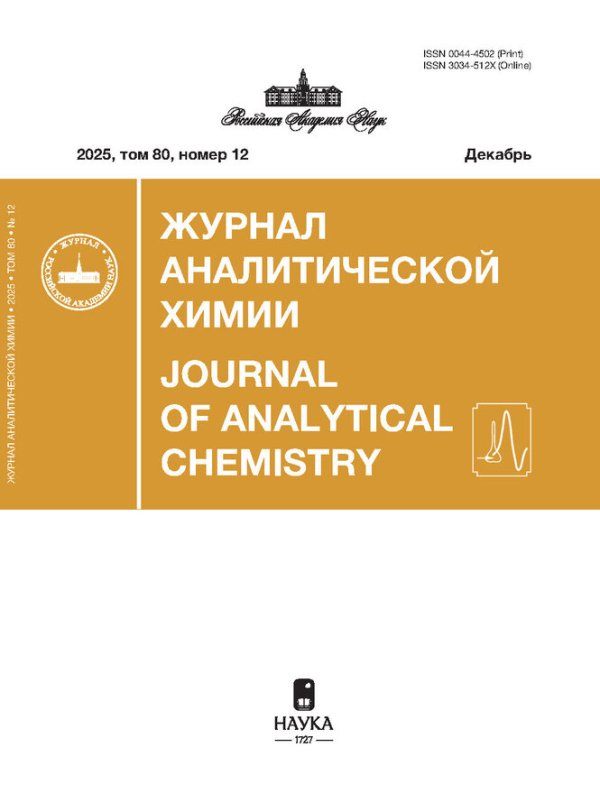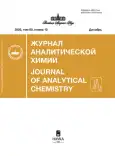Journal of Analytical Chemistry
ISSN (print): 0044-4502, ISSN (online): 3034-512X
Media registration certificate: No. 0110234 dated 02/09/1993
Founder: Institute of Geochemistry and Analytical Chemistry named after. V.I. Vernadsky RAS, Russian Academy of Sciences
Editor-in-Chief: Kolotov, Vladimir Panteleimonovich
Number of issues per year: 12
Indexation: RISC, list of Higher Attestation Commissions, CrossRef, White List (level 3)
Current Issue
Vol 80, No 12 (2025)
REVIEWS
METHODS OF NON-LABORATORY ANALYSIS USING A SMARTPHONE
Abstract
 1243-1286
1243-1286


METHODS FOR THE DETERMINATION OF SAXITOXIN AND RICIN. LITERATURE REVIEW
Abstract
 1287-1310
1287-1310


ORIGINAL ARTICLES
DETERMINATION OF FORMALDEHYDE, GLYOXAL, GLUTARALDEHYDE, AND o-PHTHALALDEHYDE IN THE PRESENCE OF EACH OTHER IN DISINFECTANTS USING 2,4-DINTROPHENYLHYDRAZINE
Abstract
 1311-1318
1311-1318


DETERMINATION OF DOXORUBICIN BASED ON QUENCHING OF LUMINESCENCE OF ALLOYED QUANTUM DOTS
Abstract
 1319-1330
1319-1330


IMPROVEMENT OF METROLOGICAL CHARACTERISTICS OF ARC ATOMIC EMISSION DETERMINATION OF REFRACTORY IMPURITIES IN REFRACTORY MATRICES IN THE PRESENCE OF FLUORINE-CONTAINING ADDITIVES
Abstract
 1331-1339
1331-1339


DIRECT ELEMENTAL ANALYSIS OF WINES BY MICROWAVE INDUCED PLASMA ATOMIC EMISSION SPECTROMETRY AND INDUCTIVELY COUPLED PLASMA ATOMIC EMISSION SPECTROMETRY
Abstract
 1340-1350
1340-1350


IMMUNOCHROMATOGRAPHIC TEST SYSTEM FOR THE DETERMINATION OF BISPHENOL A WITH MAGNETIC CONCENTRATION
Abstract
 1352-1362
1352-1362


DETERMINATION OF GLUTEN BY UHPLC-MS/MS BASED ON SUMMATION OF PEPTIDE MARKERS TO ACCOUNT FOR GENETIC VARIABILITY
Abstract
 1363-1368
1363-1368


IDENTIFICATION AND DETERMINATION OF CARBAZOLES IN NATURAL AND SYNTHETIC OILS BY GAS CHROMATOGRAPHY WITH THERMIONIC DETECTION
Abstract
 1369-1378
1369-1378


EXPRESS ANALYSIS OF MOIST SOILS CONTAMINATED WITH PETROLEUM HYDROCARBONS USING SODIUM SULFATE AS A CHEMICAL DESICCANT
Abstract
 1379-1386
1379-1386













